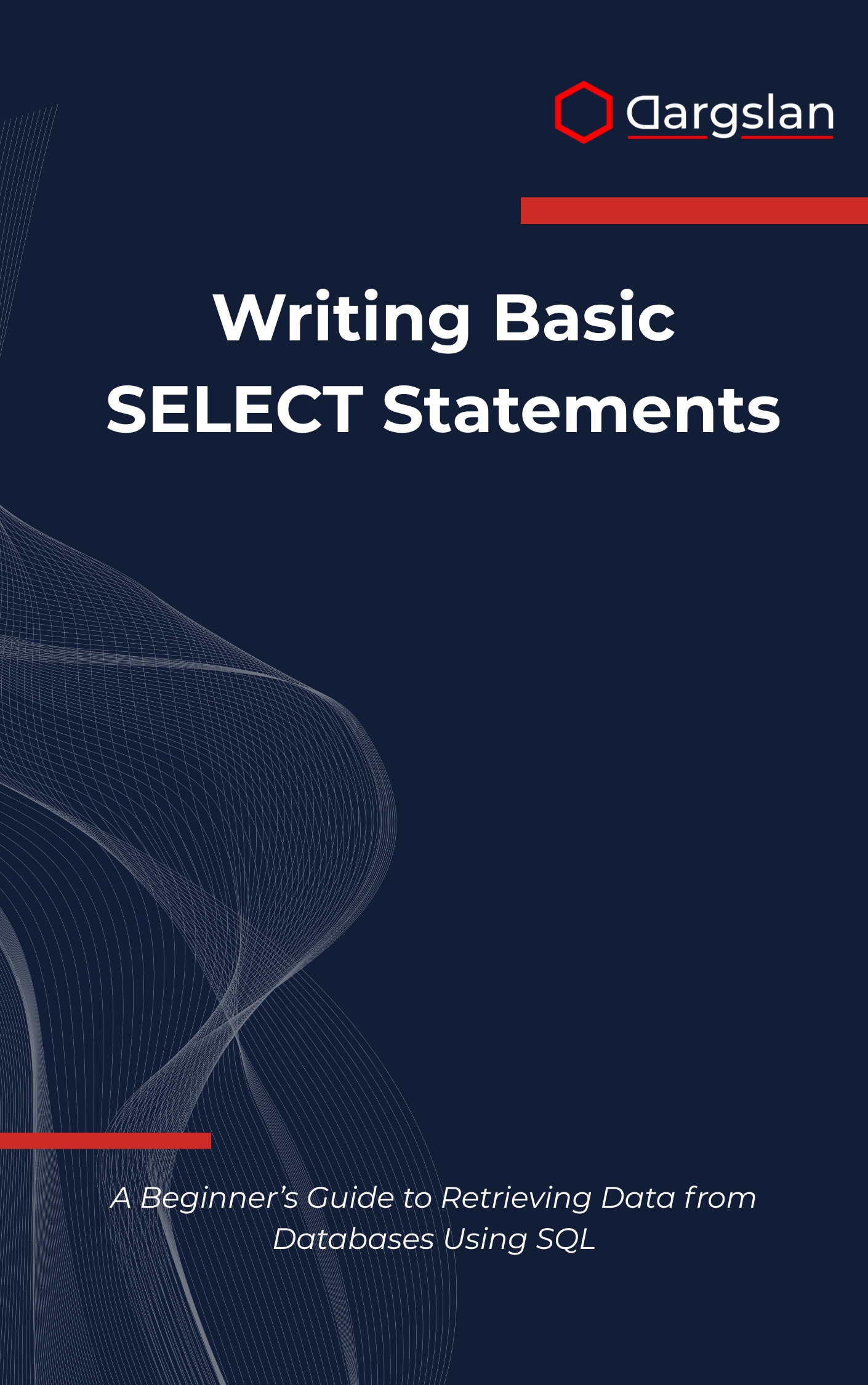Writing Basic SELECT Statements
Writing Basic SELECT Statements,Retrieve data efficiently using SQL SELECT statements and filtering techniques.

If you’ve ever stared at a database table and wondered how to turn endless rows into clear answers, this book is your shortcut. It focuses on the one command you’ll use every day—the SELECT statement—and shows you how to use it with confidence.
From simple queries to powerful filters and aggregations, you’ll learn techniques that make data retrieval fast, accurate, and repeatable. Each chapter translates business questions into precise SQL, so you can move from theory to real results in minutes.
Whether you’re studying, advancing your career, or optimizing workflows, this practical guide helps you write readable, efficient queries that stand up in professional environments. Expect clarity, hands-on exercises, and a steady path from basics to mastery.
A Beginner’s Guide to Retrieving Data from Databases Using SQL
Overview
Writing Basic SELECT Statements is the essential, beginner-friendly resource for learning SQL through focused, real-world practice. As an IT book, programming guide, and technical book, it delivers a complete introduction to SELECT statement fundamentals while teaching the habits of clean, maintainable querying. You’ll cover WHERE clause filtering, ORDER BY sorting, LIKE operator and wildcards, IN and BETWEEN operators, NULL value handling, LIMIT and OFFSET clauses, Aggregate functions, GROUP BY clustering, HAVING clause filtering, Business query scenarios, SQL best practices, and Database query optimization—all within a cohesive learning path that mirrors how analysts and developers work every day. A Beginner’s Guide to Retrieving Data from Databases Using SQL emphasizes practical reasoning, so every example helps you extract exactly the data you need, the moment you need it.
Who This Book Is For
- Newcomers to databases who want quick, reliable wins with SQL—gain the confidence to query tables, filter rows, and sort results without guesswork or trial-and-error.
- Business analysts and product managers who need to translate stakeholder questions into accurate data pulls—learn to turn requirements into SELECT statements that withstand scrutiny.
- Developers, students, and career switchers ready to become self-sufficient with data—build a portfolio of practical queries and accelerate your path to data fluency.
Key Lessons and Takeaways
- Lesson 1 — Build solid SELECT queries from the ground up: choose columns wisely, apply readable aliases, and combine WHERE clause filtering with ORDER BY sorting to return only what matters. You’ll learn to produce clean result sets that match real business needs.
- Lesson 2 — Master pattern matching and precise conditions: use the LIKE operator and wildcards for flexible searches, adopt IN and BETWEEN operators for clear logic, and handle NULL value handling correctly. You’ll also apply LIMIT and OFFSET clauses to paginate results and speed up exploration.
- Lesson 3 — Summarize and analyze data with confidence: calculate Aggregate functions, group results with GROUP BY clustering, and refine summaries using HAVING clause filtering. You’ll write queries that support reporting, KPIs, and decision-making with clarity and performance in mind.
Why You’ll Love This Book
The explanations are clear, the steps are incremental, and the examples mirror the questions people actually ask at work. Each chapter builds toward applied competence, reinforced by hands-on exercises, a comprehensive Challenge Lab, and appendices you’ll keep open as quick references. You’ll not only learn syntax—you’ll learn how to think like a data professional.
How to Get the Most Out of It
- Follow the suggested progression from simple SELECTs to filtering, sorting, and aggregation. Resist skipping ahead; the foundations make later chapters faster and easier, especially when you reach GROUP BY and HAVING.
- Apply every new concept to a real dataset you care about—sales, marketing events, product analytics, or coursework. Translate everyday questions into queries and practice iterating with WHERE conditions, ORDER BY, and LIMIT/OFFSET.
- Tackle mini-projects: build a weekly metrics query with Aggregate functions; audit records with NULL checks; compare cohorts using BETWEEN; and create a filtered report using GROUP BY and HAVING. Use the Challenge Lab to stress-test your skills.
Get Your Copy
Level up your SQL and turn raw tables into reliable insight. Start writing cleaner, faster queries today with a guide designed for real work and measurable results.




